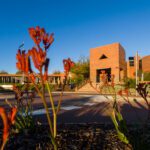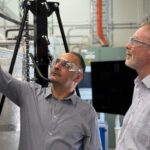Curtin University professor and performance artist Stelarc has received the inaugural Australia Council Award for Outstanding Achievement in Emerging and Experimental Arts.
Professor Stelarc, from Curtin’s School of Design and Art, was recognised for his life-time achievement in performance art often incorporating a ‘radical’ use of his own body through prosthetics, robotics, biotechnology and virtuality.
The Australia Council Awards recognise significant achievements and contributions to the Australian arts and cultural landscape.
Dr Julian Goddard, Head of Curtin’s School of Design and Art, said Stelarc inspires the arts and research communities across the world.
“As a performance artist and researcher, Stelarc has been pushing the boundaries of experimental art for decades. His work has pioneered conversations about the body in contemporary society,” Dr Goddard said.
“Stelarc is a leading figure not only in the arts, but also in research and academia, so we are delighted that he has been deservedly recognised with this prestigious award.”
Professor Stelarc said it was excellent to be acknowledged by the Australia Council in the realm of emerging and experimental art.
“This award is meaningful not only for my past projects and performances but also for the present creative research we are doing in the Alternate Anatomies Lab at Curtin,” Professor Stelarc said.
“This national award will certainly assist in generating more interest and interactive collaborations at Curtin and within the local arts and technology community.”
Professor Stelarc has worked at Curtin since 2013 where he is the Director of Curtin’s Alternate Anatomies Lab. Stelarc is exhibiting, performing and speaking in Toronto, Auckland, Seoul and Perth this year.
Stelarc’s present projects include an ambidextrous arm, a micro-robot, a wearable sound generating structure and an internet-enabled extra ear that was surgically constructed and cell-grown on his arm.
Further information on Stelarc’s work can be viewed at www.alternate-anatomies.org.


